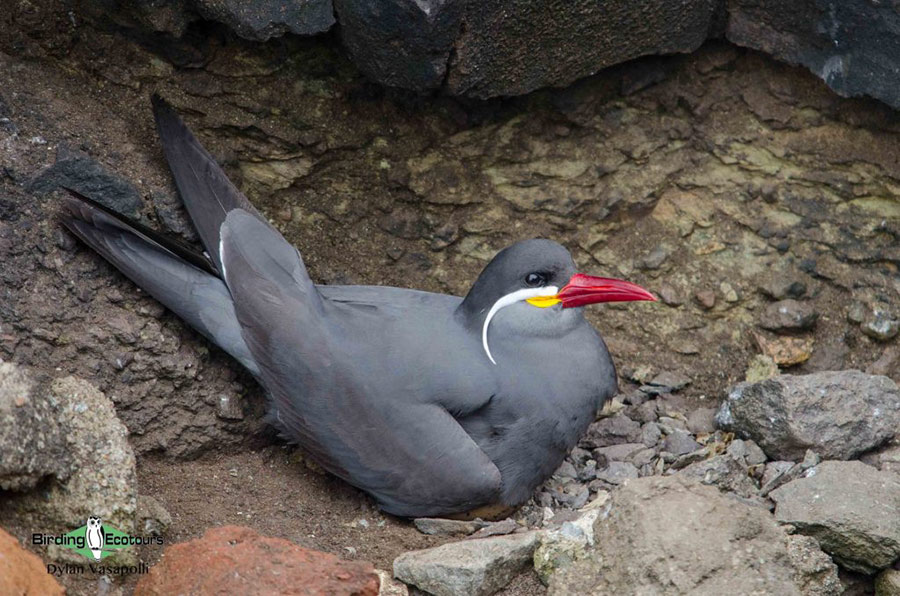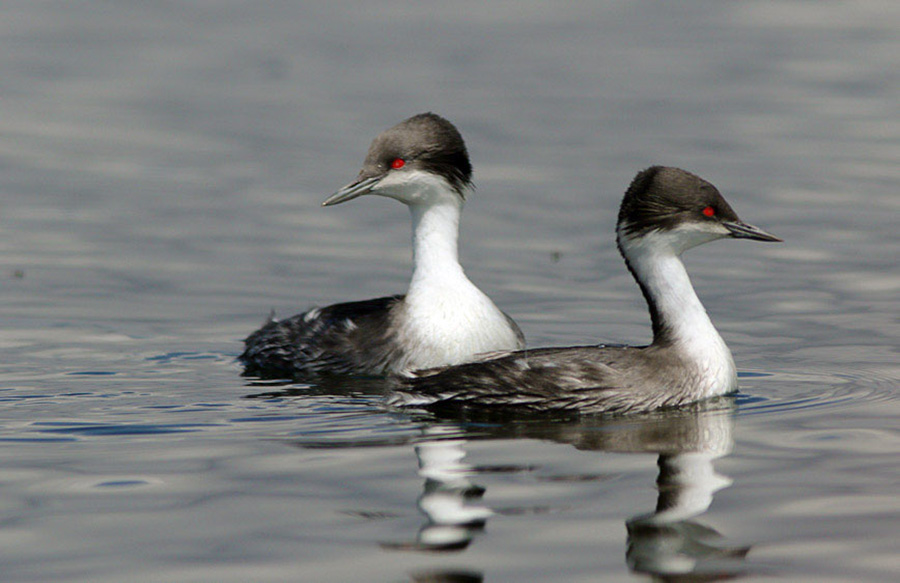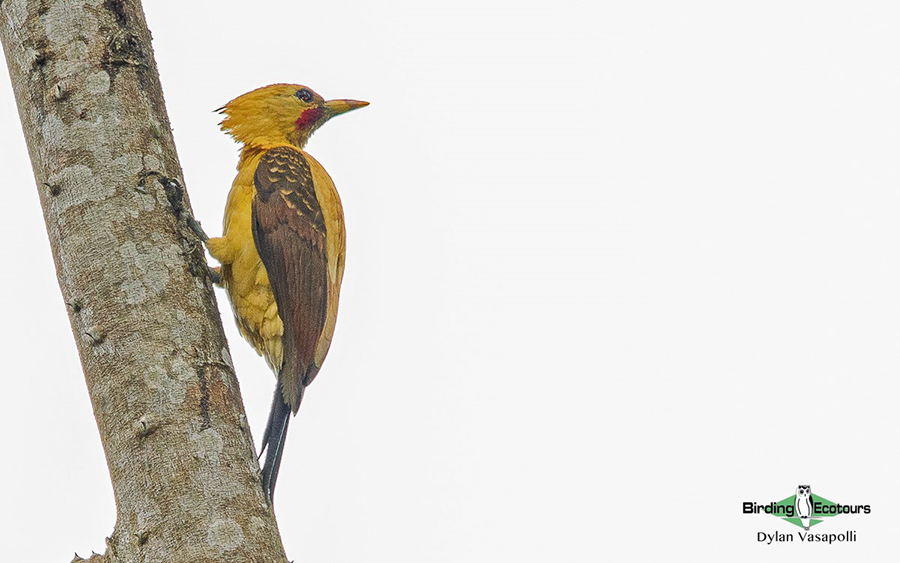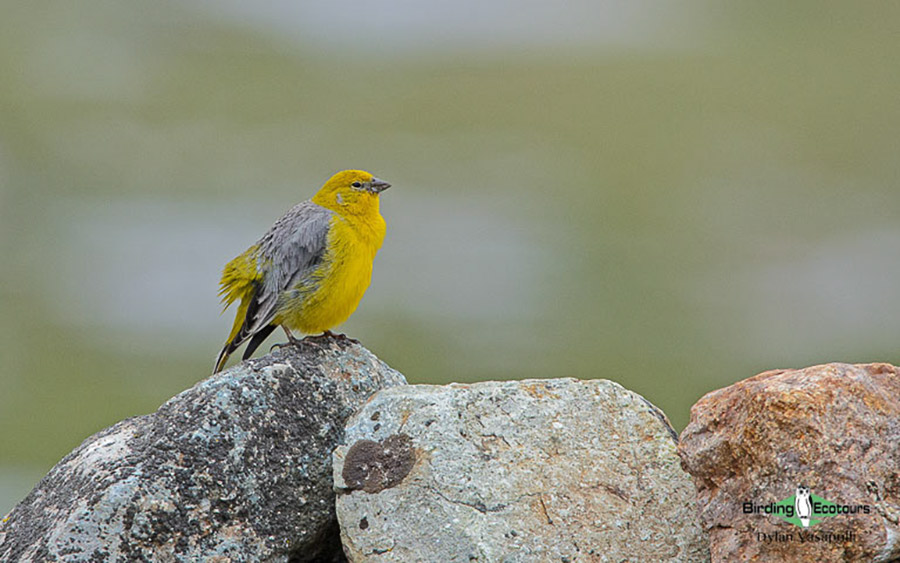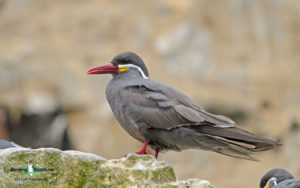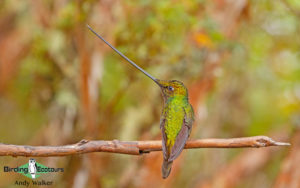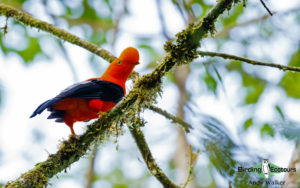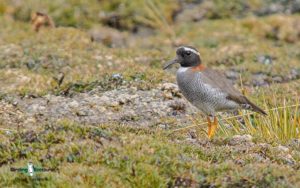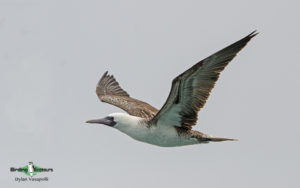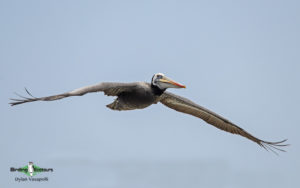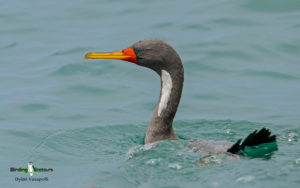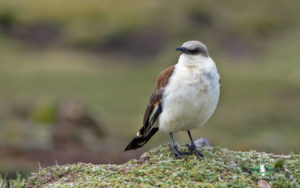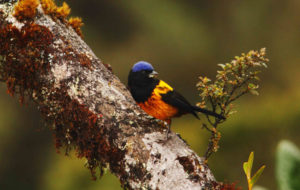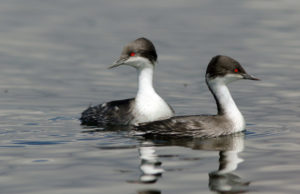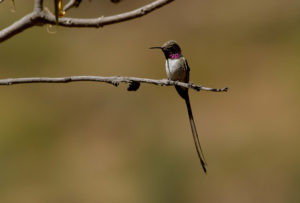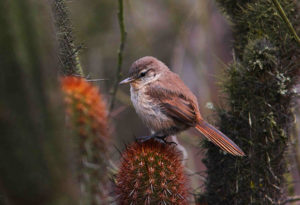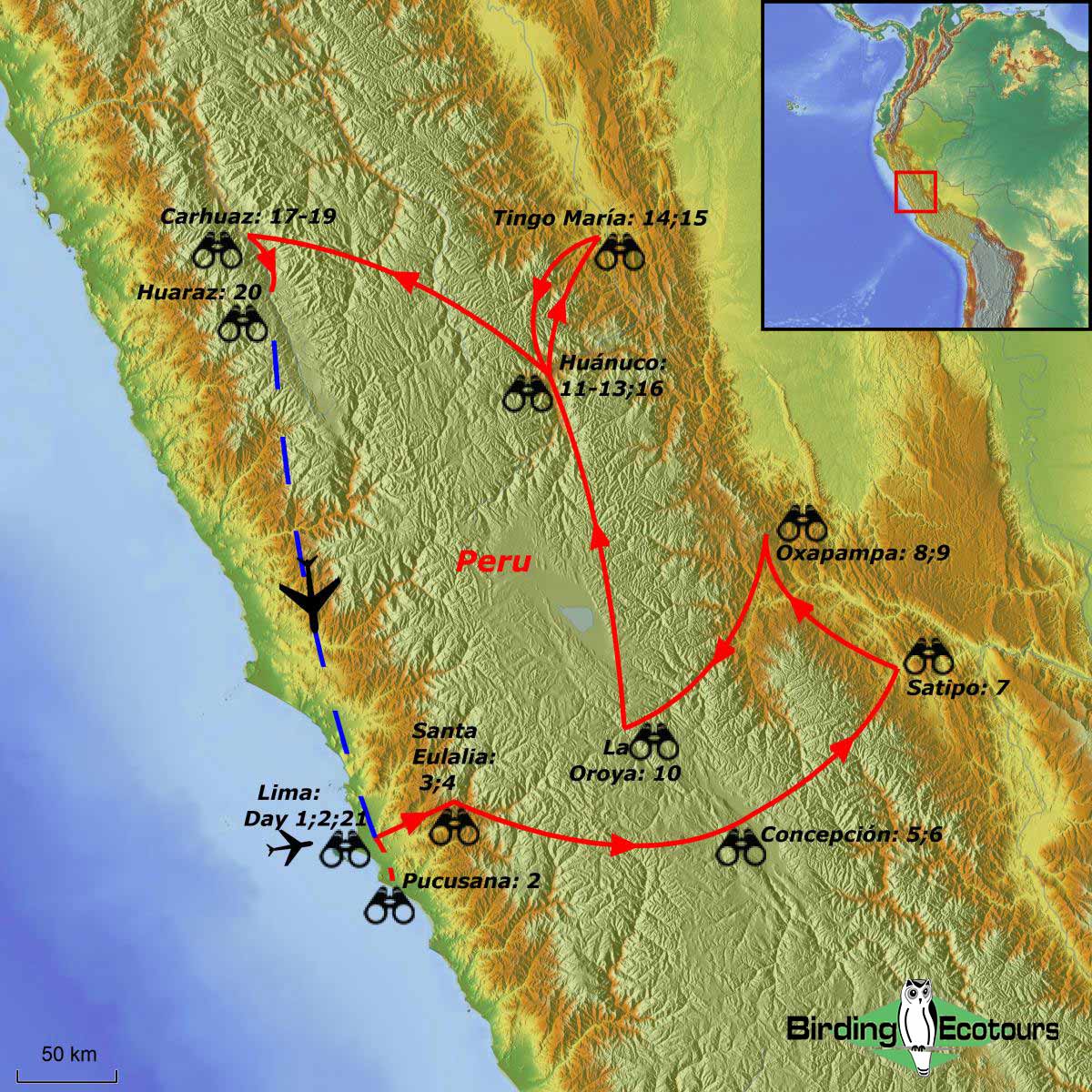Birding Tour Peru: Central Peru
Central Peru Birding Adventure
August 2025
The Central Andes of Peru is one of the least known birding routes in South America, and this is completely unjustified.
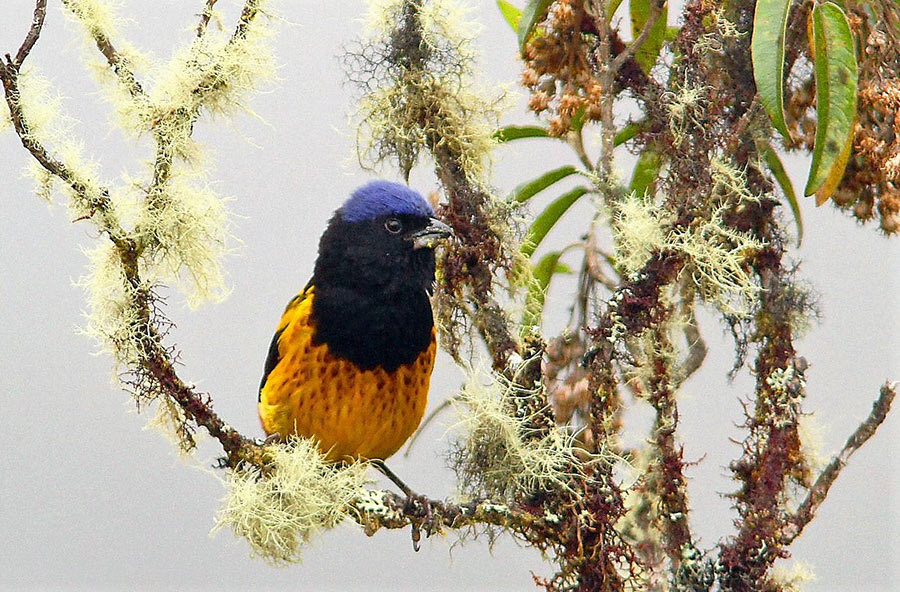
Our magnificent tour is designed to take you across the central Andes of Peru, visiting different habitats and ecosystems at varying elevations providing diverse sets of unique avian species, including several country endemics not found anywhere else. We start the trip by visiting the coast of Lima, exploring the cold waters of the Humboldt Current and habitats on the western slopes of the Andes, such as freshwater lagoons, the dry Pacific desert, the unique Peruvian lomas (areas of fog-watered vegetation in the coastal desert), the dry inter-Andean valleys, and the high-elevation mountains at the base of the mighty, snow-capped Central Andes. We will also visit the endangered Polylepis forest, which holds several sought-after Andean species. We then descend the eastern slopes of the Andes, where we explore elfin forest, like páramos, lush cloudforest and upper Amazon forest.
Perhaps the prettiest tern in the world, Inca Tern.
This birding and overlanding trip will take three weeks in total, and we could see species such as Inca Tern, Humboldt Penguin, Peruvian Thick-knee, Peruvian Pipit, Thick-billed Miner, Andean Tinamou, Great Inca Finch, White-capped Dipper, Torrent Duck, Andean Condor, Least, Grey-breasted, and Rufous-bellied Seedsnipes, White-bellied Cinclodes, Diademed Sandpiper-Plover, Andean Flicker, Junin Grebe, Black Rail (the endemic subspecies, often referred to as ‘Junin Rail’), Andean Avocet, Puna Plover, Andean Cock-of-the-rock, Blue-banded Toucanet, Peruvian Wren, and Crimson-mantled Woodpecker. In addition, we might find Bay Antpitta, Masked Fruiteater, Chestnut-crested Cotinga, White-eared Solitaire, Cloudforest Screech Owl, Oilbird, Bay Antpitta, Stripe-headed Antpitta, Rufous Antpitta, Rufous-vented Tapaculo, White-cheeked Cotinga, Bay-vented Cotinga, Blue-headed Macaw, and many more.
We should get views of the most-wanted Diademed Sandpiper-plover.
This trip is particularly good for certain special tanagers, such as the endemic Golden-backed Mountain Tanager, the endemic Yellow-scarfed Tanager, the endemic Huallaga Tanager, the endemic Brown-flanked Tanager, and other attractive species like Grass-green Tanager, Golden-collared Tanager, Scarlet-bellied Mountain Tanager, and Yellow-throated Tanager.
During our trip we will look for incredible high-elevation hummingbird species, like the endemic Black-breasted Hillstar, Olivaceous Thornbill, Coppery Metaltail, Sword-billed Hummingbird, Giant Hummingbird, Oasis Hummingbird, Peruvian Sheartail, Bronze-tailed Comet, and Blue-mantled Thornbill.
We invite you to join us in exploring this incredible birding route in Peru!
Itinerary
Day 1. Arrival
You will arrive at the Jorge Chávez International Airport in Lima and be transferred to your hotel. No activities are planned for day 1, since most international flights arrive in Lima late in the evening. If you arrive on an early flight, the hotel might charge you an extra accommodation fee for an early check-in, alternatively, we can organize an additional birding morning near the city for you.
Overnight: Hotel in Lima
Day 2. Pucusana beach, Puerto Viejo beach, and transfer to Asia Beach
We will start by visiting the fishing village of Pucusana, 37 miles (60 kilometers) south of the city. Here we will have a chance to see many coastal birds and Humboldt Current specials like Inca Tern, Belcher’s Gull, Peruvian Pelican, and Peruvian Booby. We could also see Guanay Cormorant, Red-legged Cormorant, Blackish Oystercatcher, Humboldt Penguin, and the endemic Peruvian Seaside Cinclodes. Later we will drive to Puerto Viejo beach, where we will look for Great Grebe, Andean Coot, Cinnamon Teal, White-cheeked Pintail, Peruvian Meadowlark, Many-colored Rush Tyrant, Wren-like Rushbird, Grassland Yellow Finch, Grey-hooded Gull, American Oystercatcher, Grey Gull, Peruvian Thick-knee, and the endemic Coastal Miner. We will transfer to a modern Asia Beach resort for an overnight.
Overnight: Asia Beach
Day 3. Lomas de Asia and transfer to Santa Eulalia
The Lomas de Asia municipal reserve has recently been opened to tourism and is closer to Lima than the well-known Lomas de Lachay National Reserve, both protect the same lomas costeras ecosystem. The lomas result from a combination of coastal climatic factors and peculiar geography which produces heavy clouds, fog and mist in an almost rainless desert. Mist rolls in from the nearby Pacific and moisture condenses when it reaches the Andes. The drizzle, fog and mist are most common in the humid season (approximately June to November), and supports abundant flora and fauna in the region. The Lomas de Asia are very good for the endemic Thick-billed Miner, Oasis Hummingbird, Peruvian Sheartail, Greyish Miner, Short-tailed Field Tyrant, Collared Warbling Finch, Band-tailed Sierra Finch and, hopefully, the endemic but nomadic Raimondi Yellow Finch. After lunch we will drive back to Lima and from there toward the eastern part of the Andes, where we will spend a night in the Santa Eulalia Valley.
Overnight: Santa Eulalia
Day 4. Santa Eulalia road
Today we will have an early start to explore the Santa Eulalia road and the upper canyon. This fantastic location in the highlands of Lima provides a beautiful complex of scenery, surrounded by the Andes and dominated by blue skies. We will drive over two hours up the mountains to reach the habitat of the endemic, shy, rare, and localized Rufous-breasted Warbling Finch. We will focus all our efforts looking for this tricky fellow, but in the same area we could have views of Canyon Canastero and several Peruvian endemics such as Black-necked Woodpecker, Bronze-tailed Comet, Rusty-bellied Brushfinch, Rusty-crowned Tit-Spinetail, and Great Inca Finch. Other juicy birds include Giant Hummingbird, Sparkling Violetear, Pied-crested Tit-Tyrant, Tufted Tit-Tyrant, Mourning Sierra Finch, Streak-throated Bush Tyrant, Blue-and-yellow Tanager, Black-chested Buzzard-Eagle, Aplomado Falcon, Torrent Duck, White-capped Dipper, Peruvian Pygmy Owl, Greenish Yellow Finch, and Bare-faced Ground Dove, and we might find the majestic Andean Condor.
Overnight: Santa Eulalia
Day 5. Marcapomacocha and transfer to La Merced
Today we should have great fun exploring Marcapomacocha. This is high in the Andes at almost 15,000 feet (4,500 meters) and, with care and adhering to guidelines for preventing altitude sickness, we should not experience any problems. This birding location is world famous for holding the legendary Diademed Sandpiper-Plover, and we will also be looking for some Peruvian endemics like Black-breasted Hillstar, Junin Canastero, Dark-winged Miner, and the rare, localized, and endemic White-bellied Cinclodes, listed as Critically Endangered (IUCN). Other birds here include Andean Lapwing, Andean Goose, Crested Duck, Variable Hawk, Puna Ibis, Giant Coot, Puna Teal, White-winged Diuca Finch, Black Siskin, Olivaceous Thornbill, Plain-breasted Earthcreeper, Streak-throated Canastero, Grey-breasted Seedsnipe, and Puna Snipe, and, hopefully, Rufous-bellied Seedsnipe.
Later we will drive to Concepción.
Overnight: La Merced
Day 6. La Merced and drive to Oxapampa
Today we will explore the tropical foothills of La Merced, where some of the targets will be the endemic Cerulean-capped Manakin and Creamy-bellied Antwren, among many other species. Then we will start the long drive to Oxapampa. We will arrive at our comfortable lodge in Oxapampa before dusk, where our host will be waiting for us with a tasty dinner. If the weather permits and spirits are still high, this will be our first chance to look for the poorly known Cloudforest Screech Owl,one of the main targets at this lodge.
Overnight: Ulcumano Ecolodge, Oxapampa
Day 7. Full day at Ulcumano Ecolodge
Today we will have a nice day birding around the lodge grounds. Our main targets here are the endemic Bay Antpitta, the endemic Masked Fruiteater, the endemic Rufous-vented Tapaculo, the most-wanted Chestnut-crested Cotinga, White-eared Solitaire and, hopefully, Brown Tinamou. At dusk we will look for the Cloudforest Screech Owl again.
Overnight: Ulcumano Ecolodge, Oxapampa
Day 8. Birding around Ulcumano and transfer to La Oroya
We can give the Cloudforest Screech Owl one more attempt before dawn (in case we need it) and then leave the lodge, exploring coffee plantations for the endemic Creamy-bellied Antwren. It will be a long drive back to the high Andes, to the bustling town of La Oroya. On the way we might find Mountain Caracara and Andean Ibis.
Overnight: Hotel El Dorado, La Oroya
The flightless Junin Grebe; our primary target at Lake Junín (photo Alejandro Tello).
Day 9. Lake Junín and transfer to Huánuco
Today we will explore Lake Junín (13,395 feet / 4,080 meters elevation) in search of the endemic, Critically Endangered (IUCN), and flightless Junin Grebe, one of the scarcest birds in Peru. Other birds at the lake include Andean Avocet, Puna Plover, Chilean Flamingo, Yellow-billed Teal, Puna Teal, Yellow-billed Pintail, Cinnamon Teal, Andean Duck, Cinereous Harrier, and Andean Gull. One of our major targets is the endemic and distinctive subspecies of Black Rail, which is sometimes treated as a different species called ‘Junin Rail’. In addition, the rocky and dry shores around the lake are good for the endemic Dark-winged Miner and Black-breasted Hillstar, Black Siskin, Black-billed Shrike-Tyrant, and Andean Flicker. Then we will drive across the Junín plains, also known as the Pampas de Junín, and descend to Huánuco. On the way we should see Vicuña, the national animal of Peru and featured on the Peruvian coat of arms.
Overnight: Grand Hotel Huánuco, Huánuco
Day 10. Bosque Unchog
Today we will visit the remote elfin and humid forest of Bosque Unchog in the mountains above Huánuco. This place is known to hold some of the most sought-after endemics in the Andes like the incredible Golden-backed Mountain Tanager, Bay-vented Cotinga, Pardusco, Rufous-browed Hemispingus, Brown-flanked Tanager, and Coppery Metaltail. After a full day birding, we will return to Huánuco in the afternoon.
Overnight: Grand Hotel Huánuco, Huánuco
Day 11. Bosque Unchog
This will be another full day to explore the Bosque Unchog forest, looking for the species described above and, in addition, we will look for Line-fronted Canastero, White-chinned Thistletail, Golden-collared Tanager, the endemic Yellow-scarfed Tanager, White-collared Jay, Red-rumped Bush Tyrant, the endemic Neblina Tapaculo, and Red-crested Cotinga. We will return to Huánuco late in the afternoon.
Overnight: Grand Hotel Huánuco, Huánuco
Day 12. Tingo Maria and the Oilbird cave
Today we will drive toward the eastern lowlands of Tingo Maria. On the way, we might stop along the Carpish Mountains if we see some good mixed flocks, as we have found on previous trips. Unfortunately, there is a lot of habitat destruction and access to the site from the road is difficult. The place is not as attractive as it used to be. On the way to Tingo Maria we might see Crested Oropendola, Russet-backed Oropendola, Magpie Tanager, Blue-headed Parrot, and even Fasciated Tiger Heron and Andean Cock-of-the rock. One of the main attractions of Tingo Maria is the famous Oilbird cave, where we could see many of these strange-looking birds. The Tingo Maria lowlands are also good for Blue-headed Macaw, another of our targets. Some classic lowland species are always present, such as Great and Lesser Kiskadee, White-eyed Parakeet, Cliff Flycatcher, Common Tody-Flycatcher, Rufous-breasted Hermit, Yellow-throated Toucan, Green-backed Trogon, and the endemic Huallaga Tanager. At night we will try for Tropical Screech Owl and Band-bellied Owl around our lodge.
Overnight: Villa Jennifer Farm & Lodge, Tingo Maria
Day 13. Full day at Villa Jennifer Farm & Lodge
After breakfast we will explore the grounds of Villa Jennifer, where we can see a good set of species, like Yellow-tufted Woodpecker, Lineated Woodpecker, Cream-colored Woodpecker, Blue-crowned Trogon, Olivaceous Woodcreeper, Plumbeous Kite, Spot-winged Antbird, Grey-crowned Flatbill, Yellow-throated Toucan, Golden-collared Toucanet, Chestnut-eared Aracari, Amazonian Motmot, and Lafresnaye’s Piculet. In addition, we could have good views of Gilded Barbet, Bluish-fronted Jacamar, Yellow-olive Flatbill, Mouse-colored Tyrannulet, Rufous-fronted Tody-Flycatcher, Limpkin, Capped Heron, Crested Oropendola, Blue-headed and Military Macaws, Reddish Hermit, Golden-tailed Sapphire, Grey-breasted Sabrewing, Masked Tityra, Pale-legged Hornero, Dark-breasted Spinetail, Thrush-like Wren, and Ferruginous Pygmy Owl.
Overnight Villa Jennifer Farm & Lodge, Tingo Maria
Cream-colored Woodpecker can be seen in the grounds of Villa Jennifer.
Day 14. Transfer to Huánuco
After a last morning birding around Tingo Maria we will have an easy transfer back to Huánuco.
Overnight: Grand Hotel Huánuco, Huánuco
Day 15. Drive to Carhuaz
Today we will have a long drive via the La Union mountain pass to Huaraz in the heart of the Cordillera Blanca. On the way we will look for classic Andean species like Andean Lapwing, Andean Flicker, Andean Negrito, Bright-rumped Yellow Finch, Peruvian Sierra Finch, Puna Ibis, Andean Ibis, Rufous-bellied Seedsnipe, and Grey-breasted Seedsnipe.
Overnight: Hotel El Abuelo, Carhuaz
Bright-rumped Yellow Finch – a high-altitude special.
Days 16 – 17. Huascarán National Park
We will have two full days at Huascarán National Park, a UNESCO World Heritage site, which comprises most of the Cordillera Blanca, the world’s highest tropical mountain range. Here we will look for the amazing species which occur in the Polylepis forest between the Llanganuco Lakes, including Ash-breasted Tit-Tyrant, Tawny Tit-Spinetail, the spectacular, endemic White-cheeked Cotinga, the endemic Ancash Tapaculo, the sought-after Giant Conebill, and Tit-like Dacnis. In addition, we may find the endemic Plain-tailed Warbling Finch, the endemic Striated Earthcreeper, the endemic Rufous-eared Brushfinch, and Stripe-headed Antpitta.
Overnight: Hotel El Abuelo, Carhuaz
Day 18. Birding the Huaylas road and the Pueblo Libre
On the last birding day of the tour, we will spend the morning exploring the Huaylas road looking for the endemic Rufous-backed Inca Finch, and the dry slopes of the Pueblo Libre area for the endemic Pale-tailed Canastero. Later we will transfer to Huaraz and check into our comfortable hotel.
Overnight: Andino Club Hotel, Huaraz
Day 19. Drive back to Lima with birding en route
We will have an early start as we leave the city of Huaraz and make our way to the coast at Lima. Along the route we will make strategic stops, looking for high elevation species at Lake Conococha where we might get a few new species for our already substantial list. When we reach the coast, we will visit other areas to look for Wilson’s Plover, Great Grebe, Peruvian Thick-knee, Peruvian Tern, Cabot’s Tern, White-cheeked Pintail and many other new birds. There will also be opportunities to improve waterfowl photography today. We will arrive in Lima late in the afternoon and check into our hotel and, of course, enjoy a tasty dinner to celebrate a great trip.
Overnight: Hotel in Lima
Day 20. Departure
Tour participants will be transferred to Lima’s Jorge Chávez International Airport today to catch international flights home.
Please note that the itinerary cannot be guaranteed as it is only a rough guide and can be changed (usually slightly) due to factors such as availability of accommodation, updated information on the state of accommodation, roads, or birding sites, the discretion of the guides and other factors. In addition, we sometimes have to use a different international guide from the one advertised due to tour scheduling.
Download Itinerary
GENERAL INFORMATION ABOUT PERU CAN BE READ HERE.
‘Birding Peru for the first time in July 2012 with Eduardo, a professional and very knowledgeable local Peru guide, ensured a smooth, safe and hassle-free trip filled with south Peruvian endemics such as Junin Canastero, White-bellied Cinclodes, Great Inca-Finch and Inca Wren. Eduardo was quick to spot birds and ensured that all in the group got onto the birds as fast as possible. While birding, Eduardo also enlightened and amused us with his vast knowledge of birds and other fauna of the area. At the end of each day Eduardo assisted the group to complete a list of birds seen and heard for the day. A briefing each evening prepared participants on what to expect the next day. The accommodation was clean and safe, even in off-the-beaten-track areas. I can highly recommend the Birding Ecotours bird guide in Peru.’
Lisl

